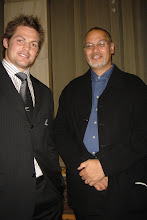During the 19th Century gold held an incredible hold over the imaginations of people. For many it was a quick route to wealth. As a result there were massive gold rushes in various parts of the world. The first was to California in 1848, the prospectors who took part were called ‘49er’s… This was followed by the Victorian rush in the 1850’s and the Eureka Stockade insurrection that followed.
 The economies of these areas grew enormously. The huge numbers of prospectors and the services they demanded created a lot of wealth (little of which actually came from finding gold). Melbourne grew from a small settlement of about 30,000 to a million i about 50 years. Gold was a quick and easy route to local, regional and national prosperity. Although the Gold was not expected to last it would provide a major kickstart to a regions economic growth, hopefully pushing it beyond the tipping point where the growth would continue....
The economies of these areas grew enormously. The huge numbers of prospectors and the services they demanded created a lot of wealth (little of which actually came from finding gold). Melbourne grew from a small settlement of about 30,000 to a million i about 50 years. Gold was a quick and easy route to local, regional and national prosperity. Although the Gold was not expected to last it would provide a major kickstart to a regions economic growth, hopefully pushing it beyond the tipping point where the growth would continue....
As a result the provincial Governments were desperate to find gold somewhere within their regions. Several offered rewards to anyone who could find it. New Zealand appeared to have the geology (although that was a relatively new science) so it simply appeared to be a matter of finding it. Early discoveries of ‘colour’ were made in Nelson and the Coromandel but were unworkable.
Eventually as you know an Australian Gabriel Read discovered gold in Otago in May 1861 and the rush was on. The province exploded, prospectors arrived from all around the world, but especially from Victoria. Many were keen to escape the taxation and corruption of the Australian fields. In Otago they were taxed less and received larger claims to boot.
 This was alluvial gold, which could initially be easily found by individuals. Later small groups or collectives formed to extract the gold from the riverbanks.
This was alluvial gold, which could initially be easily found by individuals. Later small groups or collectives formed to extract the gold from the riverbanks.
Eventually gold was also found in the West Coast, Nelson and again in the Coromandel. When news of the discovery on the Coromandel arrived in Auckland, the male population of the city disappeared overnight, emptying stores of pans, shovels and food. Many were disappointed to find the gold locked away in the rock.
 These later discoveries were quartz based gold, which required even larger amounts of money, the days of the lone prospector were numbered. Companies formed in Christchurch, Wellington or Auckland were formed to buy the equipment needed to extract the rock and crush it. This needed water or steam power, and the giant stampers which kept Grahamstown (Thames) awake 6 days a week.
These later discoveries were quartz based gold, which required even larger amounts of money, the days of the lone prospector were numbered. Companies formed in Christchurch, Wellington or Auckland were formed to buy the equipment needed to extract the rock and crush it. This needed water or steam power, and the giant stampers which kept Grahamstown (Thames) awake 6 days a week.
Gold remained an important export commodity for much of the century. Its importance lay in the changes it made to the physical and social fabric of New Zealand. Much of the South Island was now settled with towns spread from north to south and east to west.
Much of the island had been explored and for a time Dunedin was the country’s largest city. South island run-holders were able to expand as the population gave them a market for their meat. The miners also brought with them a belief in equality and the early ideas of mateship that were also developing in the bush frontier settlements of the north. This was especially strong on the West Coast where large numbers of Irish established themselves along with their Catholic beliefs.
In terms of importance Gold was a major export for the country through the remainder of the century. It brought tens of thousands of migrants to most of the South Island opening up areas that had previously been empty. It reinvigorated a slumping pastoral industry and created an infrastructure to support itself and affiliated industries. It helped to fund the wars in the North which in turn created a call for secession between the Islands.
Much of the island had been explored and for a time Dunedin was the country’s largest city. South island run-holders were able to expand as the population gave them a market for their meat. The miners also brought with them a belief in equality and the early ideas of mateship that were also developing in the bush frontier settlements of the north. This was especially strong on the West Coast where large numbers of Irish established themselves along with their Catholic beliefs.
In terms of importance Gold was a major export for the country through the remainder of the century. It brought tens of thousands of migrants to most of the South Island opening up areas that had previously been empty. It reinvigorated a slumping pastoral industry and created an infrastructure to support itself and affiliated industries. It helped to fund the wars in the North which in turn created a call for secession between the Islands.





No comments:
Post a Comment